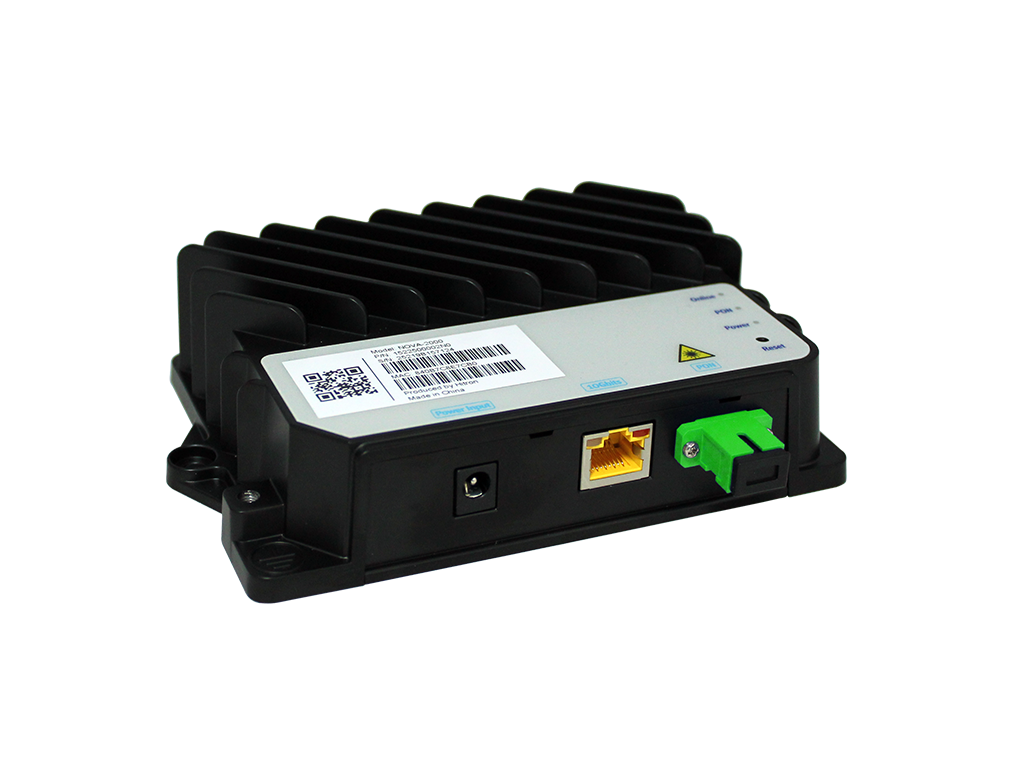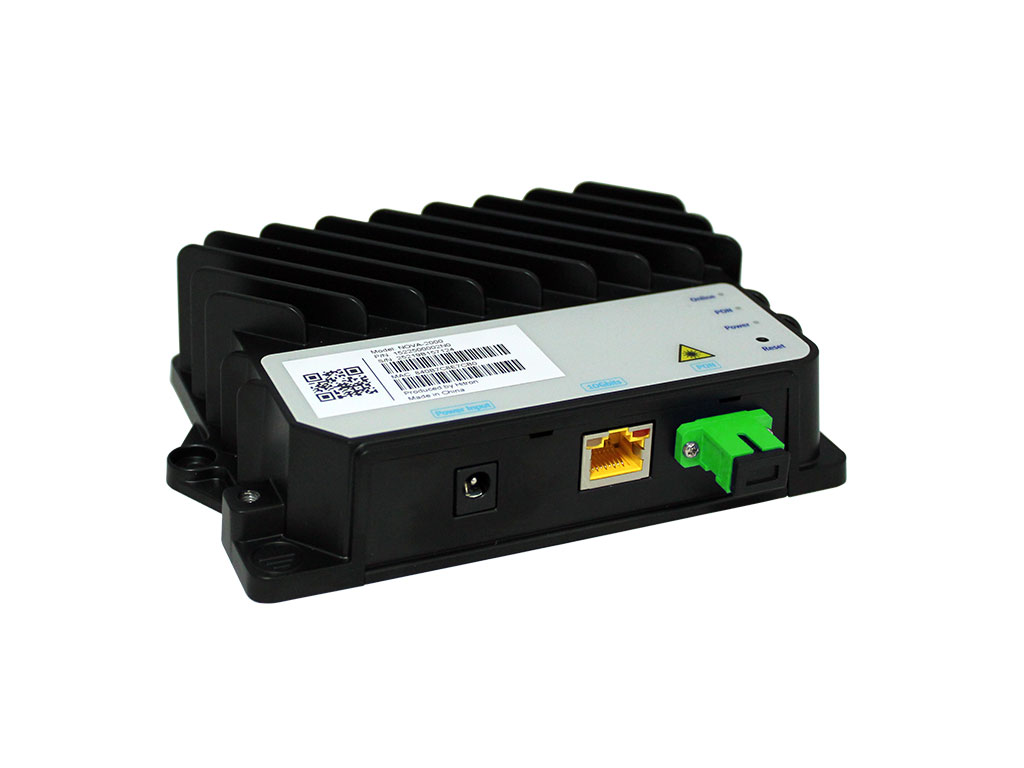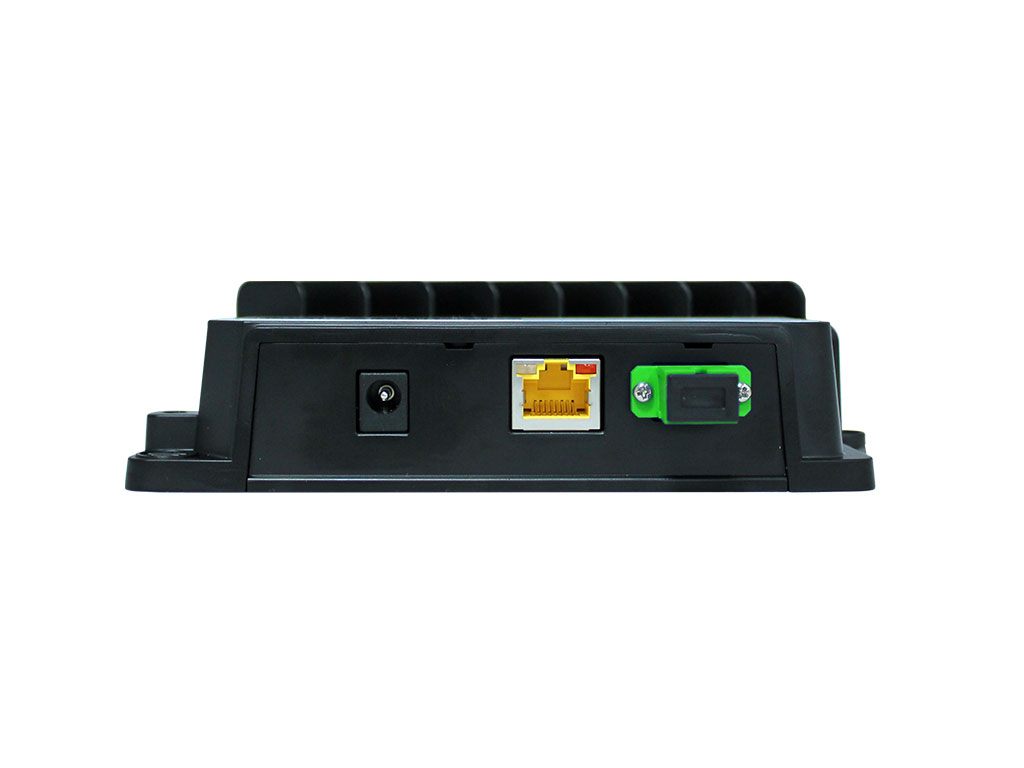10G Fiber Performance Across Standards
Supports 10G-EPON, XG-PON, and XGS-PON, enabling symmetrical multi-gig broadband access across any modern PON technology.
Ruggedized for Outdoor Deployments
Built with a hardened enclosure designed to endure dust, moisture, and extreme temperatures—ideal for both urban and remote field deployments.
Flexible Ethernet & Power Over Ethernet (PoE)
Offers a versatile 1/2.5/5/10G Ethernet port and supports optional 10G PoE, allowing flexible placement without AC power, up to 20 meters from a separate PoE injector/splitter.
Seamless Migration via DOCSIS DPoE 2.0
Maintains compatibility with existing DOCSIS provisioning ecosystems—appearing as a conventional modem to backend systems—and streamlining migration to fiber.
Advanced Configuration & OAM Support
Enables detailed operator controls via configuration files, along with robust OAM (802.3ah) for streamlined monitoring and diagnostics.
Benefits for Service Providers
- Rugged FLEXIBILITY: Supports indoor or harsh outdoor deployments for both dense and remote network nodes.
- Maximized Broadband Capability: True 10G symmetrical speeds deliver superior performance for high-demand users and services.
- Cost-Effective Fiber Transition: DPoE 2.0 maintains legacy provisioning systems while moving to cutting-edge fiber.
- Fast, Efficient Installations: Optional PoE power and compact design reduce complexity and equipment needs in the field.
Key Specifications
- PON Interface: IEEE 802.3av (10G-EPON), ITU-T G.987.2 (XG-PON), ITU-T G.9807.1 (XGS-PON)
- Ethernet Port: 1× 1/2.5/5/10GBASE-T (optional 10G PoE support)
- Power Options: DC 15V input or optional PoE injector (up to 20 m)
- Performance: Up to 10 Gbps downstream and upstream
- Provisioning: DOCSIS DPoE 2.0 compatible for seamless migration to fiber
- Management: IEEE 802.3ah OAM, configuration file support
- Design: Hardened enclosure for outdoor or rugged deployments
Documentation
A Complete Portfolio of Fiber ONT/ONU
Access Technology
XG-PON
XGS-GPON
XG-PON
XGS-GPON
XG-PON
XGS-GPON
XG-PON
XGS-GPON
XGS-GPON
Data Range
Ethernet Interfaces: (1G/2.5G/5G/10G)
One 10/100/1000
One 10/100/1000
One 10/100/1000
DOCSIS DPoE 2.0
Voice
---
Learn more about Fiber Optics, ONTs and ONUs
PON, EPON, GPON: Everything You Need to Know
Fiber optic Internet is a superfast broadband connection. On an optic fiber line, information is transmitted through pulses of infrared light. To better understand fiber optics, there are a handful of terms and abbreviations you will need to know. Before we dive into...
What is a Passive Optical Network (PON)?
PON stands for Passive Optical Network. A PON system brings optical fiber cabling and signals all or most of the way from an Internet service provider (ISP) to the end user. A PON system is designed to deliver broadband Internet access to your home or office by...
What is GPON technology?
GPON technology is a type of fiber technology. Fiber technology uses fiber cabling to distribute an Internet access for things like Voice (VoIP), video, ultra-bandwidth for HDTV experiences, online gaming and more. The fiber cabling goes from a central Internet...
What is an ONT used for?
Fiber optic technology doesn’t require a modem to get an Internet connection, it uses an ONT. ONT, or Optical Network Terminal, is a device used within an FTTx link. That could be fiber to the home (FTTH) or fiber to the business (FTTB). The installation process of...
What is the Difference Between ONT & ONU?
In a fiber-optic network, there are devices that are necessary to complete the fiber to the home (FTTH) link. One of which is the ONT/ONU. ONT stands for Optical Network Terminal. ONU stands for Optical Network Unit. An ONT and an ONU are the same things. ONT and ONU...


